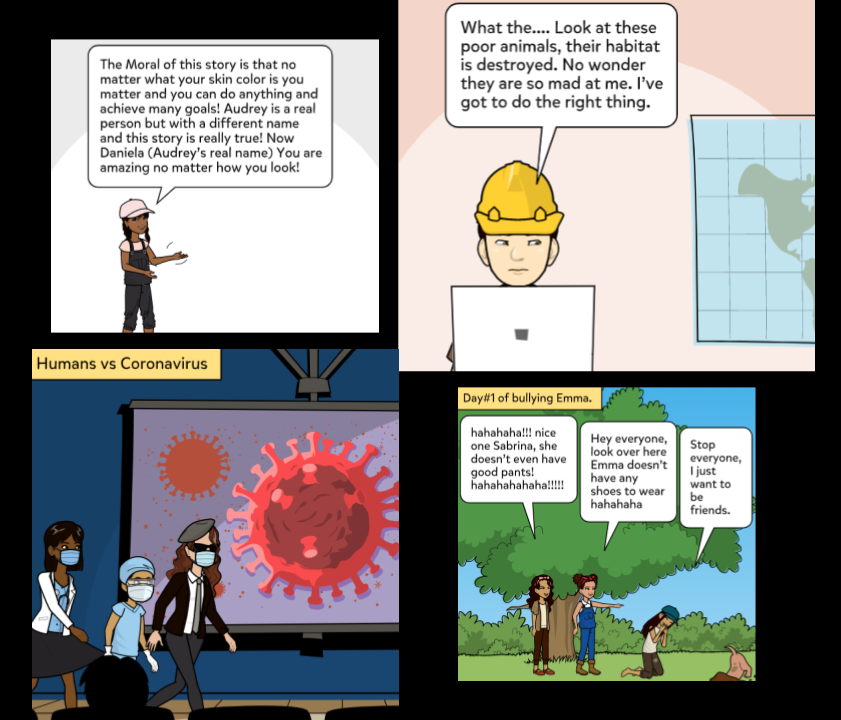From my blog posts this year, you’ve probably gathered that I believe that in order for change, there needs to be action. By action, I mean steps that are different than what is currently happening. I also believe that these steps should be taken with the community. By listening and understanding how issues are affecting people, we gain deep empathy and can create effective solutions together.
Having taught Grade 5 before, I sometimes find teaching about Government not particularly exciting. This year, however, I was eager to dig into one of the big ideas from the Social Studies curriculum: Citizens and governments need to work together in order to be able to address issues effectively and fairly. With this in mind, the students in our classroom have been hard at work learning about and creating action plans for a range of issues. In this post, I’ll share our journey thus far.
I’ll start by saying that I have been lucky to have many of the students in our classroom for the second year. The work that we did last year around exploring problems within our community certainly gave us a foundation from which to do this work. Last year, we did a couple of design thinking projects and my students are well aware that empathy is at the core of bringing about any sort of tangible change.
In January we read part of an article that shared the top 20 phrases of 2020. From there, we began an exploration of issues impacting people in our community, in Ontario, in Canada, and the world. During our reading, students identified a number of social issues: homelessness, climate change, global warming, racism, Covid-19 (deaths and vaccines), bankruptcies, and access to clean water. Students then picked an issue of interest to them and our research began. Using links online – for example, the Global Goals – students began to understand the problem in a deeper way and also started to learn about what was currently being done in terms of solutions. As they learned, they were asked to make notes, answering the questions below:
- What is this issue all about? Use facts from the sites and articles shared with you to give a brief description of this issue.
- Why has this become an issue? What are the potential causes for this issue?
- Who is affected by this issue?
- How are they affected by this issue?
- Where is this issue most prevalent?
- When does this issue happen? Is it ongoing or seasonal?
For many of the issues, some students identified that lack of awareness was an inhibiting factor when it came to creating change. If people – young people in particular – didn’t know about or weren’t directly affected by the issue, then perhaps that’s why they weren’t taking action to bring about change. We also spoke about change makers and the fact that so many are quite young. With this in mind, the students began discussing ways to raise awareness. In our class, we’ve used Kayak Magazine in the past. I shared that many of the issues include a graphic novel or comic that highlights a particular issue for students in a clear and understandable format. In the past, we read about the Black Railway Porters and about Tom Longboat and it was through these comics that we learned more about the ways in which racism has impacted the lives of Black and Indigenous People. Next, the responsibility was turned over to them to be the authors of a story about their social issue. After using a simple graphic organizer, they planned their story and used Pixton to bring it to life.

After sharing their comics with one another and getting feedback, our job was to continue to think about change. We read the book, Sometimes People March, and discussed activism and the fact that there are many forms. Thinking back to our big idea, we considered petitioning our government to act. One way of doing this is by writing letters so we started off with a lesson on letter writing, meant to persuade. Students decided if they wanted to write to their local Councillors, MPPs, or MPs about their issue and got to work. In their letters, they were tasked with sharing their recommendations for change.
We recently came together in small groups to create action plans with peers who were working on similar issues. There are so many amazing ideas being thrown around. Through this work, I continue to be amazed by young people and their ability to come up with new and innovative ideas to bring about change. Not only for themselves but for others who may be impacted. This journey has taken us a few months and we’re not quite at our end goal. We’ll keep pushing forward in hopes of making the world a better place.
